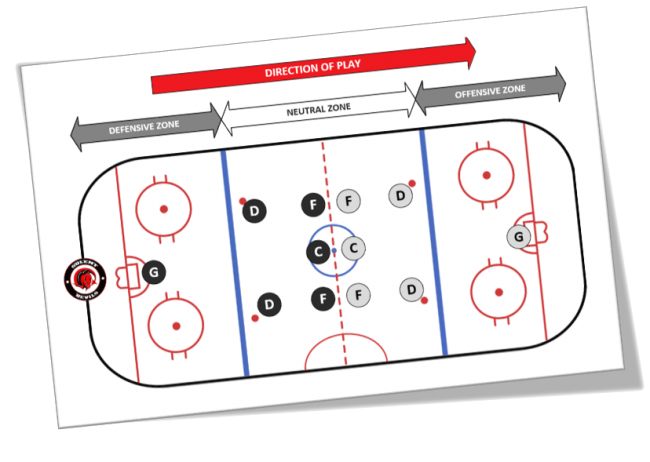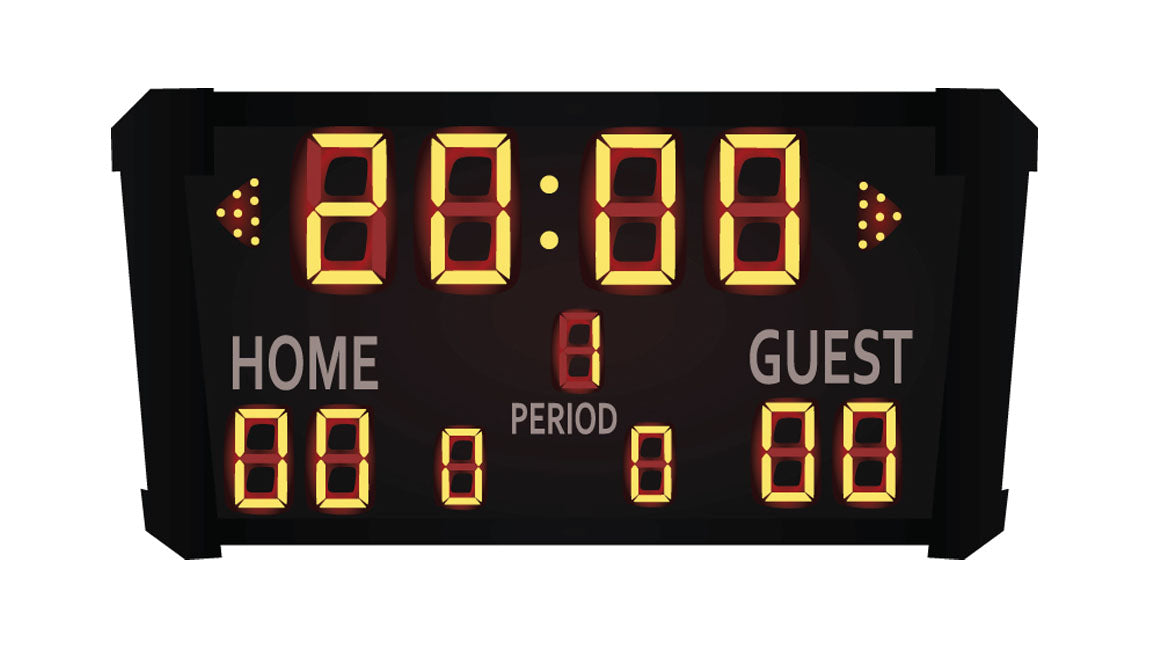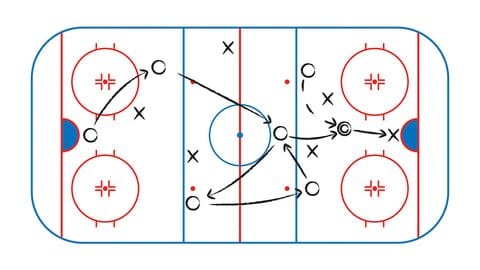Hockey is an exhilarating sport full of action. Curious about how many periods are played in hockey?
The game consists of three periods, each lasting 20 minutes. Understanding the structure of hockey is key to enjoying the game. Each period offers a fresh start, giving teams multiple opportunities to score and strategize. The break between periods allows players to rest and coaches to adjust tactics.
This structure keeps the game dynamic and fast-paced, with constant excitement for fans. Knowing the basics, like the number of periods, can enhance your viewing experience. So, let’s dive deeper into the fascinating world of hockey and explore more about its rules and gameplay.

Credit: www.solentdevils.co.uk
Introduction To Hockey Periods
Hockey is a thrilling sport known for its fast pace and excitement. One unique aspect of hockey is how the game is divided into periods. Understanding hockey periods is essential for anyone new to the sport.
Historical Background
The structure of hockey periods has evolved over time. Initially, hockey games had two halves, similar to soccer. This changed in the early 20th century.
The transition to three periods became the standard. This was done to improve the ice conditions and enhance the game’s flow. The three-period format has since become a hallmark of hockey.
Basic Structure
Today, a standard hockey game is divided into three periods. Each period lasts 20 minutes. There are breaks between the periods, known as intermissions.
Here is a simple table to summarize the structure:
| Period | Duration | Intermission |
|---|---|---|
| First | 20 minutes | 15 minutes |
| Second | 20 minutes | 15 minutes |
| Third | 20 minutes | None (End of Game) |
During these intermissions, teams can rest and strategize. The ice is also resurfaced to ensure smooth play. This structure helps maintain the high intensity of the game.
Understanding the basics of hockey periods is crucial. It enhances the viewing experience and appreciation of the sport.

Credit: www.polyglidesyntheticice.com
Standard Number Of Periods
Hockey is a thrilling sport, filled with fast-paced action and intense moments. Understanding the standard number of periods played in hockey can enhance your appreciation of the game. Knowing how the game is structured helps fans follow along more closely.
Regulation Time
In hockey, regulation time consists of three periods. Each period is critical. Teams strategize to maximize their performance within these periods.
Length Of Each Period
Each period in a hockey game lasts 20 minutes. The clock stops for specific situations. These include goals, penalties, and other stoppages. This ensures that every second counts. Players give their all during this time.
Overtime And Shootouts
Ice hockey is a thrilling sport filled with intense action and excitement. One unique aspect of hockey is how games can extend beyond regular periods. Understanding overtime and shootouts is crucial for grasping the full scope of the game. This section will break down these key elements, making it clear and easy to follow.
Overtime Rules
Overtime in hockey occurs if the game is tied after the three regular periods. The rules for overtime can differ depending on the league.
| League | Overtime Duration | Format |
|---|---|---|
| NHL | 5 minutes | 3-on-3 |
| IIHF | 10 minutes | 4-on-4 |
During overtime, the first team to score wins the game. If no team scores, the game proceeds to a shootout.
Shootout Format
Shootouts are used to determine the winner if overtime ends in a tie. The format is straightforward and exciting for fans.
- Each team selects three players to take shots.
- Players take turns trying to score on the opposing goalie.
- The team with the most goals after three rounds wins.
If the score remains tied after three rounds, a sudden-death shootout follows. Each team gets one shot per round until a winner is decided.
Understanding these rules enhances the enjoyment of watching hockey. Knowing what to expect during overtime and shootouts makes the game even more thrilling.
Variations In Different Leagues
Hockey is a sport with a rich history. Different leagues have their own rules. This includes the number of periods played. The variations can be confusing for new fans. Here, we’ll explore the formats of some major leagues.
Nhl Format
The National Hockey League (NHL) has a unique format. Each game consists of three periods. Each period lasts 20 minutes. If the game is tied after three periods, it goes to overtime. Overtime is a 5-minute period. If still tied, the game goes to a shootout.
| Period | Duration |
|---|---|
| 1st | 20 minutes |
| 2nd | 20 minutes |
| 3rd | 20 minutes |
| Overtime | 5 minutes |
International Rules
The International Ice Hockey Federation (IIHF) has its own set of rules. Like the NHL, games consist of three periods. Each period is 20 minutes long. Overtime rules differ slightly. In group stage games, overtime is 5 minutes. In knockout rounds, overtime can last up to 20 minutes. If the game is still tied, a shootout decides the winner.
- Group Stage Overtime: 5 minutes
- Knockout Round Overtime: 20 minutes
These variations keep the game exciting. Each league adds its own twist. Understanding these differences helps you enjoy the game more.
Impact On Game Strategy
The number of periods in hockey impacts game strategy significantly. It shapes how coaches plan their tactics and how players manage their stamina. Understanding these strategies can give fans a deeper appreciation of the game.
Coaching Tactics
Coaches need to plan for three periods in hockey. This structure requires them to think about how to pace their team. Early in the game, they may play more aggressively. This can help to build a lead. During the second period, they may adjust to maintain their advantage. The final period often demands a balance between defense and attack. Coaches also use timeouts strategically. They use them to rest players or break the opponent’s momentum. Effective coaching can make a big difference in the outcome.
Player Endurance
Player endurance is vital in a game with three periods. Each period is 20 minutes long. This means players need to maintain their energy for 60 minutes. They must also be ready for overtime, if needed. Players often train specifically for endurance. They need to keep their performance level high throughout the game. Skating, checking, and shooting all require stamina. Players also need to manage their time on the ice. Shifts usually last 45 seconds to a minute. Longer shifts can lead to fatigue. Proper rotation helps keep players fresh. It ensures they can perform at their best, even in the final moments of the game.

Credit: www.polyglidesyntheticice.com
Frequently Asked Questions
How Many Periods Are In A Hockey Game?
A hockey game has three periods.
How Long Is Each Period In Hockey?
Each period in hockey is 20 minutes long.
Is There A Break Between Hockey Periods?
Yes, there is a 15-minute intermission between periods.
Can Periods End In A Tie In Hockey?
No, if tied, the game goes into overtime.
How Is Overtime Played In Hockey?
Overtime is a 5-minute sudden-death period.
How Many Periods Are In Playoff Hockey?
Playoff hockey has the same three periods.
What Happens After Overtime In Hockey?
A shootout occurs if still tied after overtime.
Are There Different Periods In Junior Hockey?
No, junior hockey also has three periods.
Do International Hockey Games Have Three Periods?
Yes, international hockey games also have three periods.
Conclusion
Hockey games consist of three periods. Each period lasts 20 minutes. This structure keeps the game exciting and fast-paced. Fans enjoy the breaks between periods for rest and strategy. Understanding this format enhances your enjoyment of hockey. Remember, each period is crucial.
Teams must perform well throughout all three periods. Now, you can better appreciate the timing and strategy in hockey. Enjoy watching or playing the sport!




